demand response
description: techniques used to prevent power networks from being overwhelmed
58 results
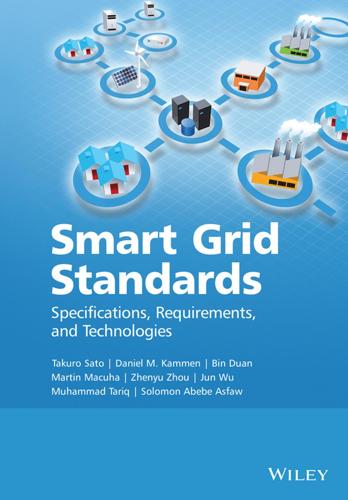
Smart Grid Standards
by
Takuro Sato
Published 17 Nov 2015
Currently, ISGAN has involved 22 member countries: Australia, Austria, Belgium, Canada, China, Finland, France, Germany, India, Ireland, Italy, Japan, Korea, Mexico, Norway, the Netherlands, Russia, Spain, Sweden, Switzerland, the United Kingdom, and the United States. 1.2.3.3 Demand Response and Smart Grid Coalition (DRSG) Demand Response and Smart Grid Coalition (DRSG) is a trade association that consists of various companies in the areas of demand response, smart meters, and the smart grid technologies. DRSG consists of executive-level members and associate-level members, who provide demand response and Smart Grid technologies and services. The member companies are working together to promote the development and adoption of demand response and Smart Grid technologies. 1.2.3.4 China Electricity Council (CEC) The China Electricity Council (CEC), which was founded in December 1988, is a joint organization of China’s power enterprises and institutions.
…
TK3105.S25 2014 621.3102′ 18–dc23 2014004867 Typeset in 11/13pt Times by Laserwords Private Limited, Chennai, India 1 2015 Contents About the Authors xi Preface xv Acknowledgments 1 1.1 1.2 1.3 1.4 1.5 1.6 1.7 1.8 2 2.1 2.2 xvii An Overview of the Smart Grid Introduction An Overview of Smart Grid-Related Organizations 1.2.1 SDOs Dealing with the Smart Grid 1.2.2 Technical Consortia, Forums, and Panels Dealing with the Smart Grid 1.2.3 Other Political, Market, and Trade Organizations, Forums, and Alliances Status of the United States (US) 1.3.1 Strategy Development and Planning 1.3.2 Policy and Law Enforcement 1.3.3 Government and Company Pilot Projects Status of the European Union (EU) 1.4.1 Activities of the European Union 1.4.2 Activities of EU Member Countries Status of Japan Status of South Korea Status of China Conclusions References 1 1 3 4 12 15 15 18 19 20 20 22 25 27 28 30 30 Renewable Energy Generation Introduction Renewable Energy Systems and the Smart Grid 2.2.1 Hydroelectric Power 2.2.2 Solar Energy 35 35 37 37 40 9 Contents vi 2.3 2.4 3 3.1 3.2 3.3 3.4 3.5 3.6 3.7 3.8 2.2.3 Wind Energy 2.2.4 Fuel Cell 2.2.5 Geothermal Energy 2.2.6 Biomass Challenges of Renewable Energy Systems 2.3.1 High Capital Cost 2.3.2 Integrating Renewable to the On-Grid 2.3.3 Reliable Supply of Power 2.3.4 Power Transmission 2.3.5 Power Distribution Conclusion References 51 56 60 64 73 73 74 74 74 74 75 75 Power Grid Power Grid Systems An Overview of the Important Key Standards for the Power Grid Communications in the Smart Grid 3.3.1 Communications for Substations: IEC 61850 Standards 3.3.2 Communications for Telecontrol: IEC 60870-5 Standards 3.3.3 Inter-Control Center Communications: IEC 60870-6 Standards Energy Management Systems 3.4.1 Application Program Interface: the IEC 61970 Standards 3.4.2 Software Inter-Application Integration: the IEC 61968 Standards Teleprotection Equipment 3.5.1 An Overview of the IEC 60834 3.5.2 Types of Teleprotection Command Schemes 3.5.3 Requirements for Command Type Teleprotection Systems 3.5.4 Teleprotection System Performance Requirements 3.5.5 Teleprotection System Performance Tests Application Cases of Related Standards in the Power Grid 3.6.1 Case 1: Engineering Process in Smart Substation Automation 3.6.2 Case 2: Information Exchange Services and Service Tracking Analysis of Relationships among Related Standards 3.7.1 IEC 61970 and IEC 61968 3.7.2 IEC 61850 and IEC 61970 3.7.3 IEC 61850 and IEC 60870 3.7.4 TASE.2 and MMS 3.7.5 Latest Progresses of Related Standards Conclusion Appendix 3.A A SED File Example (Extensible Markup Language) References 79 80 81 82 82 88 93 97 97 102 106 106 107 108 108 110 111 111 117 125 125 126 126 127 128 129 129 140 Contents 4 4.1 4.2 4.3 4.4 4.5 5 5.1 5.2 5.3 5.4 vii Smart Storage and Electric Vehicles Introduction Electric Storage 4.2.1 An Overview of Electric Storage 4.2.2 Electric Storage Technologies and Applications 4.2.3 Standardization Projects and Efforts Distributed Energy Resources 4.3.1 An Overview of Distributed Energy Resources 4.3.2 Technologies and Applications 4.3.3 Various Standardization Processes and Projects E-Mobility/Electric Vehicles 4.4.1 Introduction of E-Mobility/Electric Vehicles 4.4.2 The Rise and Fall of Electric Vehicles 4.4.3 Types of Electric Vehicles 4.4.4 Electric Vehicle Batteries 4.4.5 Grid to Vehicle (G2V) and Vehicle to Grid (V2G) Opportunities and Challenges 4.4.6 Standardization of E-Mobility/Electric Vehicles Conclusion References 145 145 146 146 147 151 154 154 155 158 160 160 161 162 164 Smart Energy Consumption Introduction Demand Response 5.2.1 An Overview of Demand Response Technologies 5.2.2 Demand Response Technology and Barriers 5.2.3 Standardization Efforts Related to Demand Response Advanced Metering Infrastructure Standards 5.3.1 The AMI System 5.3.2 The IEC 62056 and ANSI C12 Standards 5.3.3 Metering Standardization Projects and Efforts Smart Home and Building Automation Standards 5.4.1 ISO/IEC Information Technology – Home Electronic System (HES) 5.4.2 ZigBee/HomePlug Smart Energy Profile 2.0 5.4.3 OpenHAN 2.0 5.4.4 Z-Wave 5.4.5 ECHONET 5.4.6 ZigBee Home Automation Public Application Profile 5.4.7 BACnet 5.4.8 LONWORKS 5.4.9 INSTEON 183 183 184 184 185 186 188 189 189 194 197 166 170 178 180 198 207 217 221 224 228 231 233 235 Contents viii 5.4.10 5.4.11 5.4.12 5.5 6 6.1 6.2 6.3 6.4 6.5 7 7.1 7.2 7.3 7.4 7.5 KNX ONE-NET A Comparison of Smart Home and Building Automation Standards Conclusion References 235 238 Communications in the Smart Grid Introduction 6.1.1 Communication Requirements for the Smart Grid 6.1.2 List of Standards Architecture of the Communication System in the Smart Grid 6.2.1 IP in the Smart Grid Wired Communication 6.3.1 Power Line Communication 6.3.2 Optical Communication 6.3.3 Digital Subscriber Line (DSL) and Ethernet Wireless Communication 6.4.1 Introduction 6.4.2 Wireless Very Short Distance Communication 6.4.3 Wireless Personal and Local Area Networks and Related Technologies in the Unlicensed Spectrum 6.4.4 Cellular Networks in the Licensed Spectrum and WiMAX Technology 6.4.5 Satellite Communication Conclusion References 247 247 248 250 256 257 259 259 264 266 268 268 270 Security and Safety for Standardized Smart Grid Networks Introduction Threats and Vulnerabilities of Smart Grids 7.2.1 Network Vulnerabilities 7.2.2 Errors of Communications Communication Network Standards of Smart Grids 7.3.1 Wireless Network Standards 7.3.2 Wired Network Standards and Their Safety Extensions Wireless Network Security Mechanisms in the Smart Grids 7.4.1 An Overview of Security Mechanisms in the Wireless Standardized Smart Grid 7.4.2 Device Joining 7.4.3 Securing Normal Traffic Wired Network Security/Safety Mechanisms in the Smart Grid 7.5.1 An Overview of Security Technologies in the Wired Smart Grid 299 299 300 300 301 302 302 302 303 239 242 242 275 285 291 292 294 303 303 307 309 310 Contents 7.6 7.7 7.8 8 8.1 8.2 8.3 8.4 8.5 8.6 8.7 8.8 8.9 9 9.1 9.2 ix 7.5.2 Basic Security Mechanisms of Communication Infrastructure 7.5.3 Principles of Safety Extensions 7.5.4 Security Measures of Safety Extension Typical Standards of Functional Security and Safety 7.6.1 IEC 62351 Standards 7.6.2 IEC 61508 Standards Discussion 7.7.1 Safety versus Security 7.7.2 Security Level 7.7.3 Safety Level 7.7.4 Open Issues Conclusion References 311 312 313 316 316 319 321 321 321 322 322 324 325 Interoperability Introduction 8.1.1 Interoperability and Interchangeability 8.1.2 The Challenges of Network Interoperability 8.1.3 Adding Application Interoperability Interoperability Standards NIST Identified List of Standards to Be Reviewed NIST Interoperability Conceptual Reference Model for the Smart Grid Different Priority Areas Identified for Standardization 8.6.1 Wide-Area Situational Awareness 8.6.2 Demand Response and Consumer Energy Efficiency 8.6.3 Smart Energy Storage 8.6.4 Electric Transportation 8.6.5 Cybersecurity 8.6.6 Network Communications 8.6.7 Advanced Metering Infrastructure 8.6.8 Distribution Grid Management Priority Action Plans Different Layers of Interoperability Conclusion References 329 329 330 330 331 332 333 339 339 340 341 341 342 342 342 343 344 344 344 346 347 348 Integration of Variable Renewable Resources Introduction Challenges of Grid Integration of Intermittent Renewable Systems 9.2.1 Operation of a Conventional Electric Power System 9.2.2 Impact of Adding Intermittent Renewable Systems to the Power Grid 351 351 352 352 354 Contents x 9.3 9.4 9.5 9.6 10 10.1 10.2 10.3 10.4 10.5 Transitioning to Highly Renewable Electricity Grid 9.3.1 Planning Studies Very High Penetration and Grid-Scale Storage 9.4.1 Grid-Matching Analysis – Case of the Israeli Grid 9.4.2 Storage Design and Dispatch – Case of Interconnected Grid List of Standards Related to Integration of Renewable Resources Conclusion and Recommendations References 357 357 363 363 366 374 375 375 Future of the Smart Grid The Premise of the Smart Grid What the Smart Grid Should Deliver?
…
A broad set of domains are addressed in this project, including regulatory environments, smart metering functions, communication media, protocols, and data formats Part 31-1: Accelerated reliability testing – elevated temperature and humidity Part 32-1: Durability – testing of the stability of metrological characteristics by applying elevated temperature Part 41: Reliability prediction Published 2010– Chapter 5 2011 OPEN meter consortium B B Withdrawn 61107 Chapter 5 ed1.0 (1992) 61107 ed2.0 (1996) National Electrical Published 2009 Chapter 5 Manufactures Association (NEMA) IEC B 62059-41 (2006) 62059-32-1 (2011) 62059-31-1 (2008) List of Standards for the Smart Grid 439 Standard Utility AMI High Level Requirements OpenADR 1.0 OpenADR 2.0 Application or service areas Advanced Metering Infrastructure Demand Response/Load Control Demand Response/Load Control Utility AMI high level requirements: the high level requirements specified by the UtilityAMI are to provide AMI vendors with some general guidelines when designing or developing AMI systems or components OpenADR 1.0 system requirements specification: the OpenADR 1.0 specification was accepted as part of the OASIS energy interoperation (EI) standard, which was developed to define an information and communication model to enable demand response and energy transactions OpenADR 2.0 profile specification: OpenADR 2.0 was developed to define profiles which are specific to DR and DER applications.
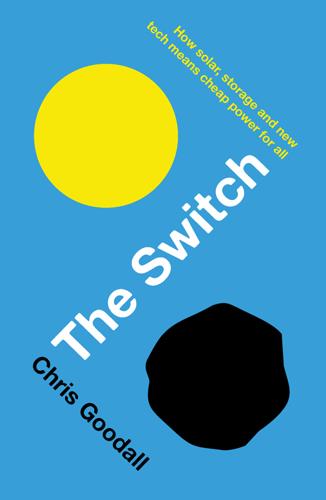
The Switch: How Solar, Storage and New Tech Means Cheap Power for All
by
Chris Goodall
Published 6 Jul 2016
A diesel generator emits a lot of CO2 – often much more than a large conventional power station – so it isn’t a great solution. Much more is required. In the jargon of the industry, we need to implement large scale ‘demand response’ that cuts electricity use when it looks as though supplies are getting tight. Not only will this mean that countries such as the UK don’t have to invest in barely used assets but, importantly from our point of view, variability in electricity supply will be much easier to manage. When the wind isn’t blowing as hard as expected or the clouds come in earlier than forecast, we need ‘demand response’ to kick in to automatically reduce the amounts of power used by electricity users, large and small.
…
If they are not, its system temporarily removes the paper factory from the portfolio of demand response participants. ‘Every business has bottlenecks,’ says Mermans. ‘Every production line has points at which goods are stored, waiting to go through that bottleneck.’ The machines that make those goods can usually be shut down for a half hour at no cost to the business whatsoever. ‘In fact, we help them reduce their electricity bill and they get paid for cutting usage when power is in short supply.’ A couple of months later, another UK demand response coordinator, Open Energi, made a similar point by publicising some of the details of its contract with Tarmac, a leading asphalt producer, to introduce automated management of the electricity demand of its 200 asphalt tanks.
…
Or, at a much larger scale, a frozen food warehouse could reduce the electricity demand for its chillers, probably for several hours. A hotel might choose to limit its air conditioning demand for shorter periods. One of the main targets for demand response companies is the waste water treatment industry. Sewage farms and their associated infrastructure use large amounts of power. They can usually stop some of their machinery working for long periods without any adverse effects on the overall operation of the plant. Enbala, a demand response company based in Vancouver, Canada, that operates in a similar software-driven way to REstore, says it can work with ‘anything that has a motor’ to reduce electricity demand for an hour or more.

Shorting the Grid: The Hidden Fragility of Our Electric Grid
by
Meredith. Angwin
Published 18 Oct 2020
Conservation took the form of demand response. A demand-response customer promises to go offline when the grid is stressed. Such a customer was allowed to bid into the winter-reliability auctions, just as oil-fired plants were allowed to bid. A demand-response customer would be paid for not using electricity, just as a power plant would be paid for keeping oil or LNG on-site. Unfortunately for ISO-NE and the grid, there usually isn’t a big response to demand response. In 2013, ISO-NE bought 1.9 million Megawatt-hours (MWh) worth of bids for the Winter Reliability Program. Only 4,000 MWh of demand-response customers bid into the auction.
…
As I wrote: “In 2017–2018, ISO-NE paid approximately $24 million for oil as part of the Winter Reliability Program but paid only $34,000 for demand-response bidders.” ISO-NE spent more than 700 times as much on oil as on demand response, because they got so few demand-response bidders. Demand response may not be popular with businesses, but it is very popular with some environmentalists—the ones who favor less energy use and favor paying for “negawatts.” (Armory Lovins introduced the “negawatt” concept in 1985. It basically consists of setting economic incentives for using less electricity.) If you have connected Energy Star appliances and a smart meter, you have the equipment to be enrolled in a demand-response program. The big question is whether joining this program would be voluntary on your part or whether the utility would simply enroll you.
…
In 2017-2018, ISO-NE paid approximately $24 million for oil as part of the Winter Reliability Program but paid only $34,000 for demand-response bidders.26 ISO-NE just doesn’t get that many demand-response bidders. In short, very few groups want to go without power in winter. In fact, demand-response bidding functioned as greenwashing for the oil-storage program. Greenwashing is a form of marketing spin in which green marketing is deceptively used to persuade the public that an organization’s products, aims, and policies are environmentally friendly. I do not mean to imply that ISO-NE planned the demand-response solicitation as a form of greenwashing. I am just pointing out that you can offer to pay customers to give up electricity on very cold days.
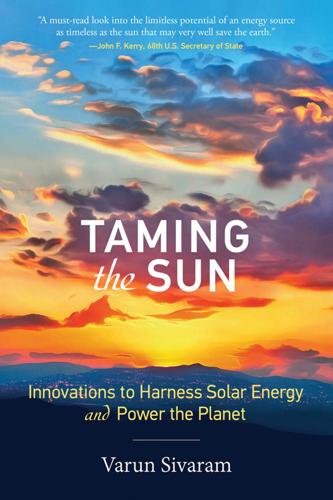
Taming the Sun: Innovations to Harness Solar Energy and Power the Planet
by
Varun Sivaram
Published 2 Mar 2018
Afshar, “Application of IPSO-Monte Carlo for Optimal Distributed Generation Allocation and Sizing,” International Journal of Electrical Power & Energy Systems 44, no. 1 (2013): 786–797. 40. Stephen Lacey, “Microsoft Says ‘Computational Demand Response’ Could Lower Data Center Emissions 99%,” Greentech Media, June 27, 2013, https://www.greentechmedia.com/articles/read/Microsoft-Says-Computational-Demand-Response-Could-Lower-Data-Center-Emis. 41. Hao Wang, Jianwei Huang, Xiaojun Lin, and Hamed Mohsenian-Rad, “Proactive Demand Response for Data Centers: A Win-Win Solution,” IEEE Transactions on Smart Grid 7, no. 3 (2016): 1584–1596, doi:10.1109/tsg.2015.2501808. 42. Jamshid Aghaei and Mohammad-Iman Alizadeh, “Demand Response in Smart Electricity Grids Equipped with Renewable Energy Sources: A Review,” Renewable and Sustainable Energy Reviews 18 (2013): 64–72, doi:10.1016/j.rser.2012.09.019. 43.
…
Rob’s idea was so captivating that I realized that my fingers were freezing only when the end of the lift interrupted our conversation. Graciously, he guided me down the quickest run to the lodge so I could warm up with some hot chocolate. What Rob was proposing was an example of a general strategy called “demand response,” in which customers adjust their power consumption to help the grid balance supply and demand. Demand response has actually been around for decades, although not in nearly as nimble a form as what Microsoft and others are pursuing today. Currently, utilities have various programs in which they pay customers to turn down the air conditioning on a hot summer day when high demand is straining the grid (to cite just one example).
…
So when the sun is shining over Europe, U.S. data centers would scale back their power consumption and transmit their data over to Europe to be processed and sent back.50 Thus, demand response on a decentralized grid could give rise to an optical supergrid. That idea is a little far-fetched—and possibly unworkable, given the latency, or delays, that would accumulate from trying to move data around the world to follow the sun. Also, data centers account for only a small (but rapidly growing) fraction of the world’s power consumption. And yet, the core insight—a hybrid approach that would combine the demand response capability of a decentralized grid with the interconnections of a supergrid—is sound.
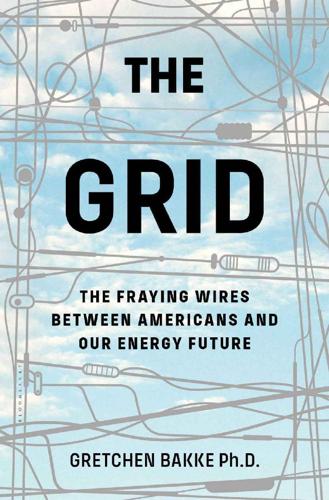
The Grid: The Fraying Wires Between Americans and Our Energy Future
by
Gretchen Bakke
Published 25 Jul 2016
See also Katherine Hamilton, “SPEER Releases Report on Benefits of Demand Response,” Advanced Energy Management Alliance, October 29, 2015, http://aem-alliance.org/speer-releases-report-on-benefits-of-demand-response/. “generators to increase supply”: Mooney (2015). He goes on: “In particular, the objection before the Supreme Court is that this scheme of compensation gets FERC into regulating retail electricity markets, the ones that you and I are familiar with, because that’s where we buy our own electricity from power providers. And FERC doesn’t govern those—state public utility commissions do. What’s complicated is that while demand response companies participate and bid into the wholesale markets—governed by FERC—their own clients are companies buying electricity on the retail markets, just like you and me (but generally on a much larger scale).
…
Negawatts, in other words, can now be ordered up by the utility and delivered by an Albertsons. Network enough of these power-savers into a flexible, smart piece of software, and you have your platform. This demand-response capacity, called DR in the business, not only brings energy saved into the mix of resources available to grid operators by literally making conservation count, but it is another non-thing slowly taking grid governance by storm. And it doesn’t stand alone. With computerization demand-response can be linked to other machines for making or saving power that we are currently building, willy-nilly, into the grid. Most of these are paid for by a mix of interested parties including investors, utility companies (which is to say, rate-payers), and state and federal subsidies.
…
The Federal Energy Regulatory Commission, the only regulatory body with a mandate to govern our electrical system, felt that a “commitment to reduce demand” should “be compensated the same amount as an equivalent commitment by generators to increase supply.” This was not just about fairness, but also a means of making the grid a more integrative machine. Or, in their words, “paying demand response providers the full value of their contribution to the market would help overcome preexisting barriers to demand-response participation and increase the reliability and competitiveness of wholesale markets.” Legislation can be used to wrench open rather than delimit who participates in our grid, whether as producers of power or of savings. FERC selected the more difficult path, but the one that will force an inclusivity—a technological as well as a financial problem—into the substrate of our grid.
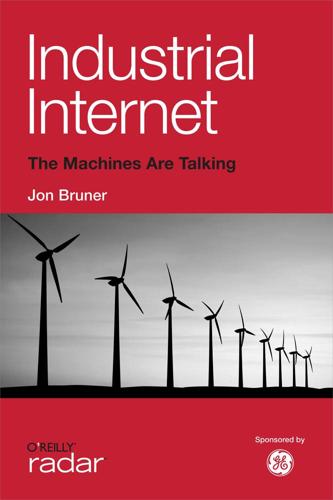
Industrial Internet
by
Jon Bruner
Published 27 Mar 2013
I’m interested in comfort in the room. The delivery of those services, and who delivers those services, is really the fundamental problem. How do you take a copper infrastructure and transform that into a system that delivers the services or the end results that you’re actually interested in?” Building controls and demand response Buildings — heating them, cooling them, lighting them, filling them with entertainment — make up 74% of U.S. electricity demand[17] and 56% of natural gas usage[18]. Much of that energy is used to heat, cool, light and entertain rooms much more than their occupants need. The industrial internet will connect to building controls to moderate the relationship between people and the buildings they inhabit, balancing the sometimes-conflicting goals of reducing energy usage and keeping occupants comfortable.
…
Software that sits on top of building controls will build thermal models and learn about occupants’ preferences, then gently manage buildings. At an abstract level, coordinating buildings with their occupants is a familiar problem. “Lots of appliances and other building systems are more or less asynchronous with occupants,” says Mary Ann Piette, director of the Demand Response Research Center at Lawrence Berkeley National Laboratory. Home air conditioners run while we’re at work, offices are cooled to uncomfortably low temperatures, lights stay on when we leave the room. Bringing these under better control will make it possible to form buildings to their occupants.
…
Peak-hour output, which relies on expensive and dirty power plants that can be switched on quickly, is vastly more expensive to produce than the baseline power that comes from always-on sources like nuclear plants, and it consumes large amounts of capital investment than can’t be widely amortized. (In California, for instance, state-wide electricity demand stays below 30,000 megawatts about 80% of the time. For about 20 hours every year, though, it exceeds 47,580 megawatts[20] — capacity that must be built and maintained for use only a few times every summer.) The object of demand response is to flatten the demand curve along the course of each day, week, and year, which in turn means less capacity will be necessary. It’s an example of better controls standing in for machines. Utilities and their customers will both benefit from better connections between buildings and the grid.
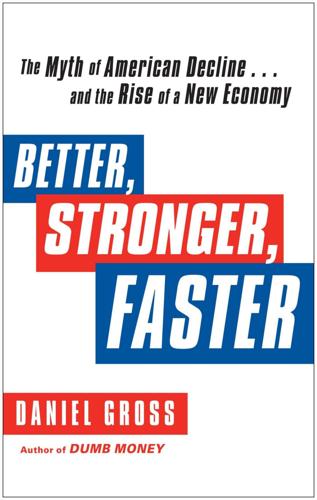
Better, Stronger, Faster: The Myth of American Decline . . . And the Rise of a New Economy
by
Daniel Gross
Published 7 May 2012
It’s far better to invest in measures that can cut use by 5 or 10 percent at peak periods (90-degree days in August) than to build and maintain a standby power plant that will be called into action for just a few days per year. The concept of encouraging some users to dial down their electrical loads at a time when other users are ramping it up is called “demand response.” In recent years, information and communications technology has enabled much greater use of demand response. Utilities negotiate deals with big users, who agree to dim lights and turn down air-conditioning or heating when asked. They also pay companies like EnerNOC to do it for them. EnerNOC has effectively created a very large virtual power plant by obtaining commitments from companies that let it reach into their systems and dial down energy usage.
…
There’s no installation cost for the user. EnerNOC shares the payments it gets from the utilities with customers who agree to be part of the plan to reduce usage. When customers actually cut their usage, they receive additional payments. The demand-response model has proved attractive in a recessionary environment of pinched capital spending. EnerNOC’s demand-response program grew from 800 customers with 2,200 sites at the end of 2007 to 4,750 customers at 11,150 sites by September 2011. From the beginning of 2008, when the recession started, to the third quarter of 2011 EnerNOC expanded its ability to supply power nearly sixfold without stringing up a single line.
…
Time and again this plant has been called into action by utilities—300 times in the first three quarters of 2011 and 225 times in the summer alone. On July 22, 2011, EnerNOC’s network “delivered approximately 1,230 megawatts of demand response capacity,” helping to reduce the risk of blackouts and lessening the need for utilities and power users to buy electricity on the spot market. EnerNOC has expanded operations to Canada, New Zealand, and Australia. EnerNOC has a second, smaller line of business that pivots off its main line of demand response. It sells software that analyzes buildings and generates ideas on how to cut energy use. In effect it promises that the service will be free to customers.

Human Transit: How Clearer Thinking About Public Transit Can Enrich Our Communities and Our Lives
by
Jarrett Walker
Published 22 Dec 2011
Public transit consists of regularly scheduled vehicle trips, open to all paying passengers, with the capacity to carry multiple passengers whose trips may have different origins, destinations, and purposes. Let’s take this definition apart: • • a “regularly scheduled vehicle trips”: Transit is provided by a vehicle running on a regular schedule or pattern. There is room for variation in routes and schedules. Demand-responsive services, for example, may vary their routing according to customer requests, within set limits. But at its core, transit service must be predictable so that different people can plan around it without coordinating directly with one another. This feature is the crucial difference between transit and other ways of sharing a ride.
…
Fixed services are the most efficient form of transit in terms of the ability to carry many passengers for each hour of the driver’s time, so they have come to represent well over 99 percent of transit ridership in the United States. The rest, accounting for less than 1 percent of ridership, are various kinds of flexible or demand-responsive services, where the routing followed by a transit bus or van can change based on customer requests. Although flexible route services are an area of great innovation, they remain limited because they’re intrinsically less efficient. Taking a different route depending on customer requests, as flexible routes do, takes more of the driver’s time for each passenger’s needs.
…
In the North American and Australasian context, this makes sense. Even in an era of car-oriented decentralization, high-rise RIDERSHIP OR COVERAGE? | 125 What About Flexible Service? Whenever I explain why Sparseville ridership is always lower than Denseville’s, someone asks: “Would flexible or demand-responsive services do better in Sparseville?” The answer is: “Yes, sometimes, but not nearly enough to raise Sparseville ridership to Denseville levels.” In both low-density suburban and rural areas, flexible services are a useful tool for optimizing performance and meeting hard-to-meet needs, but they don’t let you avoid the service allocation question.
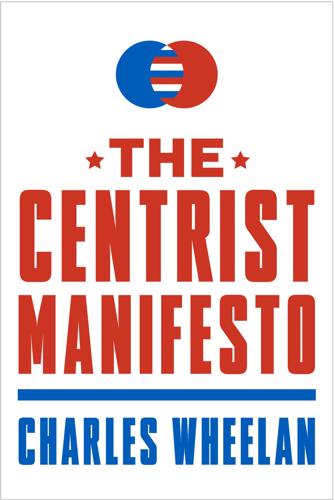
The Centrist Manifesto
by
Charles Wheelan
Published 18 Apr 2013
We should respect the rights of individuals and, to the extent possible, finesse our deep ideological disagreements on social issues by keeping government out of our private lives. When that is not possible, we should search for pragmatic compromises (e.g., reducing the number of abortions rather than conducting scorched-earth campaigns over every Supreme Court nominee). At the same time, we must demand responsibility from every citizen. A society that offers a meaningful safety net has a right to ask certain things of its citizens in return. It is not okay to drop out of school, or to have a child whom one cannot support financially and emotionally, or to engage in any other behavior with large social costs that redound to the rest of society.
…
The Centrist Party is about wrestling the country away from extremist groups whose views are out of sync with those of most Americans. And behold, the policy I have described is something that most moderate voters could live with. The Centrist gun policy unequivocally supports the rights of law-abiding Americans to have and use guns; it demands responsibility from gun manufacturers, retailers, and owners; and it uses technology to keep weapons out of the wrong hands. Isn’t that better than what we’ve been doing? MORE BROADLY, ISN’T the Centrist approach to social issues a refreshing change to the overheated Democratic and Republican rhetoric?
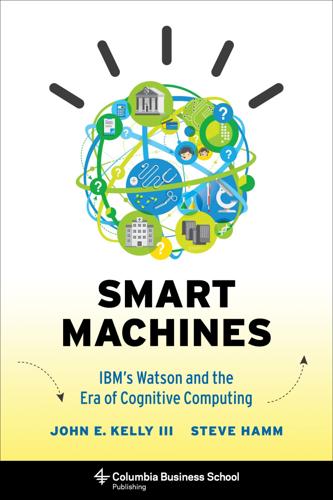
Smart Machines: IBM's Watson and the Era of Cognitive Computing (Columbia Business School Publishing)
by
John E. Kelly Iii
Published 23 Sep 2013
So the way to think about improving the operations of cities is through resource management, matching supply with demand.7 This concept is well known to people in the electric utility business. They create demand-response models with data and analytics that make it possible to manage vast grids with multiple types of supplies and myriad consumers of electricity, as well as variables such as weather and earthquakes. Now, Guru says, we need to create much larger demand-response models for improving the livability and economic vitality of cities. He thinks of these models as cognitive engines for city management. The first step is to continuously gather vast quantities of data of all types about available resources.

Lonely Planet Scotland
by
Lonely Planet
Check the website for packages. 8Information Aberfoyle Tourist Office (%01877-381221; www.visitscotland.com; Main St, Aberfoyle; h10am-5pm Apr-Oct, 10am-4pm Nov-Mar; W) Large office with good selection of walking information. 8Getting There & Away AFirst (www.firstgroup.com) Has six daily buses (Monday to Saturday) from Stirling (£4.60, 45 minutes). Demand Responsive Transport (DRT) Operates in the Aberfoyle area. TROSSACHS TRANSPORT In a bid to cut public transport costs, Demand Responsive Transport (DRT (Demand Responsive Transport; %01786-404040; www.stirling.gov.uk)) now covers the Trossachs area. It sounds complex, but basically it means you get a taxi to where you want to go, for the price of a bus. There are various zones.
…
At Trossachs Pier, Katrinewheelz (%01877-376366; www.katrinewheelz.co.uk; Trossachs Pier, Loch Katrine; hire per half/full day from £15/20; h9am-5pm Apr-Oct, 11am-3pm Sat & Sun Nov-Dec & Feb-Mar) hires out good bikes and even electric buggies. Bring a picnic; the cafe is mediocre. Loch Katrine is within the Demand Responsive Transport (DRT) zone and can be reached by prebooked transport from either Callander or Aberfoyle. Loch Achray WalksHIKING The path to the rocky cone called Ben A'an (454m) begins at a car park just east of the Loch Katrine turnoff. It's easy to follow and the return trip is just under 4 miles.
…
Rannoch Station Tea RoomCAFE£ (%01882-633247; www.rannochstationtearoom.co.uk; Rannoch Station; mains £4-6; h8.30am-4pm Mon-Thu & Sat, 10am-4.30pm Sun, closed Fri; p) This superb little tearoom sits on the platform at remote Rannoch Station, serving coffee, sandwiches and cake to visiting hikers, mountain bikers and railway excursionists. Next door, in the former waiting room, is a fascinating exhibition on Rannoch Moor and the history of the railway. 8Getting There & Away Broons Buses (%01882-632418; www.broonsbusesandtaxis.co.uk) Runs a demand-responsive minibus service (ie you have to phone and book it) between Kinloch Rannoch and Rannoch Station (£3, 35 minutes). Elizabeth Yule Coaches (%01796-472290) Operates a bus service from Pitlochry to Kinloch Rannoch (£3.70, 50 minutes, three to five a day Monday to Saturday, April to October) via Queen's View and the Inn at Loch Tummel.

City 2.0: The Habitat of the Future and How to Get There
by
Ted Books
Published 20 Feb 2013
Rebecca Sanborn Stone works to connect citizens, practitioners, and leaders building stronger communities and to provide them with the ideas and resources they need to create change. She is a senior associate at the Orton Family Foundation and lives in Vermont with her husband, two daughters, dogs, cat, chickens, and a big garden. Kent Larson directs the City Science Initiative at the MIT Media Lab, with research focused on transformable urban housing, mobility on demand, responsive technology, and living lab experiments. Larson practiced architecture for 15 years in New York City. His book, Louis I. Kahn: Unbuilt Masterworks, was selected as one of the Ten Best Books in Architecture, 2000, by the New York Times Review of Books. Benjamin de la Peña is associate director for urban development at the Rockefeller Foundation, where he works on issues related to cities, informal settlements, transportation, information technology, and urban science and policy.

Net Zero: How We Stop Causing Climate Change
by
Dieter Helm
Published 2 Sep 2020
Smart meters will provide smart data at the household level, opening up scope to use the data to better optimise the local systems, and offering the possibility of active demand responses. The smart systems may help with the new car-charging requirements. Battery storage can offset the intermittency of local renewables generation, and the network itself may become much more fluid. Instead of automatically adding more cables, perhaps a wind turbine embedded in the local network, plus storage and some active demand response, might be better?[6] Taken together, it is immediately obvious that the current local network owners (distribution network operators) are unlikely to be unbiased about these choices, especially if they have a deep vested interest in protecting and enhancing their assets.
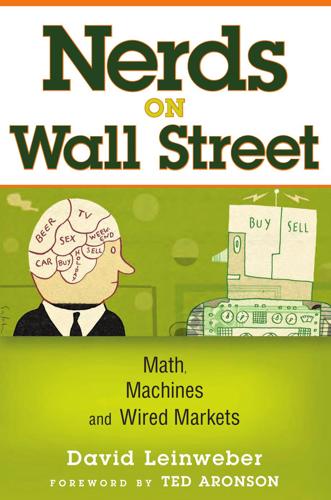
Nerds on Wall Street: Math, Machines and Wired Markets
by
David J. Leinweber
Published 31 Dec 2008
Source: GridPoint (www.gridpoint.com). 334 Nerds on Wall Str eet GridPoint explains how its simple blue box on the wall addresses all the key issues in our electricity future: The platform applies information technology to the electric grid to enable distributed energy resources to perform the same as central-station generation. During peak periods, utilities efficiently balance supply and demand by discharging stored power from distributed generation assets or reducing customers’ non-essential loads through demand response programs. Additionally, utilities effectively optimize baseload generation assets and relieve stress on transmission and distribution systems. The platform enables utilities to deploy proven technologies, (e.g., load control devices and advanced batteries) while creating a practical path for integrating new technologies (e.g., plug-in hybrid electric vehicles [PHEVs] and fuel cells).
…
From an environmental perspective, we should view energy efficiency as a basic building block in reducing the industry’s emissions profile. In 2004 alone, efficiency programs in place saved more than 29 million metric tons of carbon equivalent greenhouse gas emissions.10 The Brattle Group attached some numbers: Demand response programs based on advanced metering and dynamic pricing could reduce peak load in the United States by at least 5% over the next few years for a savings of approximately $3 billion per year in electricity costs. The discounted present value of these savings would be $35 billion over the next 20 years.11 Remember the good old days when $35 billion was a large number?
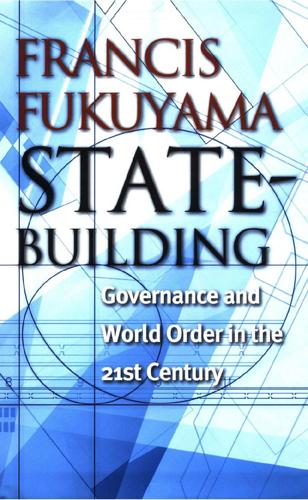
State-Building: Governance and World Order in the 21st Century
by
Francis Fukuyama
Published 7 Apr 2004
Another example of ways in which informal habits affect formal institutions concerns the role of social capital in a government’s relations to its beneficiaries. Holding government agencies accountable to the public is to some extent a matter of institutional design and internal checks and balances, but ultimately, it is the people whom government supposedly serves who are responsible for monitoring its performance and demanding responsive behavior. Society organized into cohesive groups—whether in the form of parent-teacher associations (PTAs), watchdog groups, or advocacy organizations—is much more likely to demand and receive accountability than one consisting of disorganized individuals. On the other hand, civil society can degenerate into rent-seeking interest groups whose goal is not greater accountability but an increase in the scope of government subsidies or the substitution of government for civil society.

Virtual Competition
by
Ariel Ezrachi
and
Maurice E. Stucke
Published 30 Nov 2016
In areas and at times where it became difficult to find a parking space, parking rates increased incrementally “until at least one space is available on each block most of the time;” in areas where parking spaces were plentiful, parking rates decreased “until some of the empty spaces fill.”29 The city also directed “ drivers towards available parking by sending real-time availability to mobile apps and to the website.”30 The city’s pi lot “demand-responsive” pricing program was apparently successful on many levels. It helped improve parking availability and net revenues.31 It decreased drivers’ average search time for a space.32 It also helped reduce greenhouse gas emissions,33 peak period congestion,34 traffic volume,35 vehicle miles traveled,36 and double parking.37 So if one major U.S. city could determine the market-clearing price for parking spaces, does this mark a rebirth for “smarter” price regulation, albeit under a more fashionable and acceptable term, such as data-driven dynamic pricing?
…
See Tacit collusion Consumer-provided content, superplatforms and revenue from, 233–236, 236f, 241 Consumer surplus, 86, 88; producer welfare surplus competition and, 234 Cookies, data extraction and, 167–170, 316nn28,30, 316n33 Council of Economic Advisers Report, 240 Coupons.com, 91, 94, 156, 171–172, 187, 311n38 Credit cards, behavioral discrimination and framing effects, 111 Credit Suisse, 269n9 Currie, David, 116 Data advantage, competitive value of, 20–21, 263n79 Data brokers, 95, 104–105, 124–125, 170 Data extraction. See Extraction and capture strategies; Personal data Deadweight welfare loss, privacy and, 242–244 Decoy products, behavioral discrimination and, 106–107 Deep learning. See Self-learning algorithms Demand-responsive pricing program, 214 350 Index Department of Justice, in U.S.: light touch antitrust policies, 24, 263n2; Messenger collusion scenario and, 39–41; report on competition and monopoly, 224 Deutsche Bank, 269n9 Didi Chuxing, 6, 152 Differential pricing. See Price discrimination Digital Eye collusion scenario, 37, 71–81; enforcement challenges and lack of anticompetitive intent, 77–80; “God View” and real-time data processing, 72–75; self-learning algorithms and autonomous pricing decisions, 74–77, 78 Digitized hand: competitive prices and questions of regulations, 205–217; replacing of invisible hand of competition by, viii, 27, 203 Disconnect app, 179–180, 184–186, 187, 239 Discrimination, blurring with behavioral discrimination, 124–127, 129 “Do Not Track” browser features: Facebook and, 173; Google and, 186; proposed policy for, 172; Target and, 92 Drip pricing, behavioral discrimination and, 109–110 Driverless cars, Frenemy dynamics and Uber, Apple, and Google, 151–155 DuckDuckGo, 157, 200 Dynamic and allocative efficiencies, of online markets, 7–8 Dynamic pricing: hub and spoke collusion scenario, 47–52; online advantages over brick-and-mortar stores, 13–14; price discrimination and, 87–88, 112 Economist, The, 106, 238 Efficiencies, of online markets, 7–8, 50 Efficient markets hypothesis, 207–208.

Good Prose: The Art of Nonfiction
by
Tracy Kidder
and
Richard Todd
Published 15 Jan 2013
No one should presume to tell anyone where to fit on this spectrum, but one should recognize that it exists. Even those who have been trained in a language of distance and irony toward everything institutional, and especially toward government, must feel from time to time that there is something that justifies thinking in Orwell’s terms—that there is something about one’s own time that demands response. But what response, and how to make it? One can only say it is possible that writers live most fully when their work moves beyond performance, beyond entertainment or information, beyond pleasing audience and editor, when it does all that and yet represents their most important beliefs. * * * *I read the first paragraph and flung the magazine across the room, and picked it up again about twenty years later.

Lonely Planet Scotland's Highlands & Islands
by
Lonely Planet
Wheels Cycling Centre CYCLING (%01877-331100; www.scottish-cycling.com; bike per hour/day/week from £8/20/90; h10am-6pm Mar-Oct) The Trossachs is a lovely area to cycle around. On a cycle route, excellent Wheels Cycling Centre has a wide range of hire bikes. To get here from the centre of Callander, take Bridge St off Main St, turn right onto Invertrossachs Rd and continue for a mile. TROSSACHS TRANSPORT DRT (Demand Responsive Transport; %01786-404040; www.stirling.gov.uk) covers the Trossachs area. It sounds complex, but basically it means for the price of a bus you get a taxi to where you want to go. There are various zones. Taxis should preferably be booked 24 hours in advance by phone. 4Sleeping oCallander Hostel HOSTEL€ (%01877-331465; www.callanderhostel.co.uk; 6 Bridgend; dm/d £19.50/60; piW) S This hostel in a mock-Tudor building has been a major labour of love by a local youth project and is now a top-class facility.
…
Rannoch Station Tea Room CAFE€ (%01882-633247; www.rannochstationtearoom.co.uk; Rannoch Station; mains £4-6; h8.30am-4.30pm Mon-Thu & Sat, 10am-4.30pm Sun; p#) This superb little tearoom sits on the platform at remote Rannoch Station, serving coffee, sandwiches and cake to visiting hikers, mountain bikers and railway excursionists. Next door, in the former waiting room, is a fascinating exhibition on Rannoch Moor and the history of the railway. 8Getting There & Around A demand-responsive minibus service (www.pkc.gov.uk) – ie you have to phone and book it at least 24 hours in advance – runs between Kinloch Rannoch and Rannoch Station (£3, 35 minutes). Elizabeth Yule Coaches (%01796-472290; www.elizabethyulecoaches.co.uk) operates a bus service from Pitlochry to Kinloch Rannoch (£4.10, 50 minutes, three to five daily Monday to Saturday April to October) via Queen’s View and the Inn at Loch Tummel.

The Price Is Wrong: Why Capitalism Won't Save the Planet
by
Brett Christophers
Published 12 Mar 2024
At any rate, the IPCC, expressing a broad consensus, judges that for these reasons it would, as things stand, be extremely ‘challenging to supply the entire energy system [solely] with renewable energy’.35 Unsurprisingly, incumbent fossil fuel interests have made much of this issue, citing the intermittency of solar and wind power to fearmonger about impending electricity blackouts if the push to renewables is accelerated. The expectation among experts, however, is that, in the medium and long term, advanced energy systems will be able to handle the intermittency of solar and wind power relatively comfortably. Part of the answer will be what is commonly called ‘demand response’, which essentially means motivating electricity users to adjust their consumption patterns to better fit the vagaries of renewables supply – for example, charging their electric vehicles when it is windy and sunny and electricity, being plentiful, is relatively cheap. But the bigger part of the answer will come on the supply side, taking two main forms.
…
See real-time markets Ballentine, Miranda 240 Bangladesh 305–6, 328–9, 346 Bank of America 311 bankability, of renewable energy projects 66, 177, 181, 232–3, 244–6, 255, 260, 263 banks 181 investment in fossil-fuel-based electricity generation 179–80 risk aversion 175–6, 178, 179 Baringa Partners 255 barriers to entry 202–3, 211 baseload contracts, electricity supply 241 baseload generating capacity 67, 79, 159 baseload power 25–6, 247–8 Bazin, Philip 181 Bear Energy 339–40 Bear Stearns 339–40 Belgium 19 Berman, Beth Popp 107–9 Bhattacharya, Ananya 330 bid stack (electricity spot market) 166, 169, 171–2 Biden, Joe 20, 197, 203, 378 bioenergy 14, 26 biological diversity 86–7 Birol, Fatih 126, 348 Bittle, Jake xxv blackouts (electricity) Indian electricity crisis (2022) 305–6 Texas electricity crisis (2021) 307–12 BlackRock xxvi–xxvii, 231–3 BlackRock Global Renewable Power II 96 Blanc-Brude, Frédéric 221 Bloomberg 368–9 BloombergNEF 26, 31, 125, 127, 239, 293–4, 299, 324 Blueprint for a Green Economy (Pearce et al.) 108, 109, 110 Bollier, Dominik 233 Booth, Philip 350, 351 BP 215–16, 335–6 Brookfield Asset Management 82–3 Brower, Derek 347–8, 371 Bruegel 327–8 Buffett, Warren 197 Build Public Renewables Act (BPRA) 375–9 Bullard, Nathaniel 27–8, 333–4 Bureau of Ocean Energy Management 85 bureaucracy 129–30 Butler, Nick 202, 212, 214 CAISO 366–7 California xxiii, 36–9, 215, 222, 339-41, 365, 369 solar generating capacity 35–6 Cameron, David 164 cannibalization effect, in electricity price formation 226–8, 285 capacity agreements 223 capacity factor, wind power 71 capacity markets 66–7 capital availability of xiii, xxix, 177, 220–1 cost of 94, 115–17, 219–20, 260, 347–8 capitalism xxii–xxvi, 99–100 actually existing xxv environmental impact xxiii–xxv failure to turn away from fossil fuels xxvi green xxv–xxvi path dependence xxiv profit imperative xxii–xxiv and renewable power xxii–xxiii Carbon Brief 271 carbon capture 26 carbon dioxide (CO2) emissions xvii, 3, 4–5, 8–9, 326–7, 341–3 Carbon Emission Reduction Facility (CERF) 116–17, 291–2 carbon tax 129 Carbon Tracker 127, 130–1 Carney, Mark xxviii–xxix Carr, Housley xxv Carroll, Bobby 376, 378 causes, of European energy crisis (2021–22) 317–20 Cembalest, Michael 141 Central Electricity Generating Board 44–5 certificate schemes 183–4 Chediak, Mark 128 Chernobyl disaster (1986) 19 Chevron xxv, xxvii China xvi, 53, 120, 189, 190, 203 benchmark tariff 287 Carbon Emission Reduction Facility (CERF) 116–17, 291–2 central bank support to renewables 116–17, 291–2 climate change 28 coal production capacity 314 coal use in electricity generation 6, 345 coal-fired power plants 27, 314–16 corporate PPAs 251–2 de-monopolization of generation 52 dominance of clean-energy manufacturing 121–2 electricity consumption 7, 314 energy crisis (2021–22) 313–17 energy security 27–8 feed-in tariff (FiT) 287, 289, 292 geography of renewable power facilities 155 government support framework 121–2, 286–94 investment waves 287–8, 289–90, 291 marketization 64–5, 316 megaprojects 293–4 oversupply 206–7 periods of renewables curtailment 208–9, 288–9 policymaking 122 private sector renewables developers 294–5 solar and wind capacity growth 267, 268, 286–7, 378 solar subsidies 289–90 spot markets, electricity 168–9 subsidies terminated 290–1 Three Gorges Dam 17 unbundling of electricity sector 47 zero-subsidy renewables plants 293 zero-support renewables 266 Chow, Valery 329 Christie, Mark 37 City of London Corporation 234 Clark, Brett xxii classical economics 136–7 Clearway Energy 35–6, 36–7, 39 climate change 3–4, 8–9, 18, 28, 34, 109, 180, 342–3, 351 Climate Change 2022: Mitigation of Climate Change (IPCC) 8–9 Climate Change Conference (COP 26) 341–2 climate change mitigation electricity sector major role 2, 11–13 ongoing failure xv–xvii scenarios 2 climate denialism 84–5 Climate Response Financing Operation 116 coal 314 dependency on 306 relative cheapness 103, 106, 109 use in electricity generation 6, 26, 345 coal-fired power plants 27, 314–16, 318, 326–7 Cohen, Steve 126 Cole, Jonathan 181 colonial legacy 347 commercial and public services, electricity consumption 4 commercial contexts 36–41 commercial landscape, renewable power 81–3 commoditization 362–4 compensation, for curtailment of power supply 288–9 competition 40, 68, 123, 146, 156 coercive law of 144, 145 in electricity generation xxi, 37, 51–4, 57 in electricity retail 48–51 and negative pricing 224 prices 144–5, 146–7 United States of America 202–3 Condliffe, Jamie 270 Conservative Texans for Energy Innovation (CTEI) 85 construction cost, renewables plants 73–7 Contracts for Difference (CfDs) 184–5, 186–7, 223, 250, 272–3, 274–5 Copley, Michael 182 Cornwall Insight 224–5, 226 corporate finance 95–6 corporate power-purchase agreements 64, 65, 234–7, 234, 295–6, 310, 354–5 additionality 257–8 bankability 260–1 companies’ rationale for signing 241–4 contract duration 249 counterparty risk 258–60 customer types 240 and decarbonization 254 economic returns 262 energy transition and 252–6 growth of 254, 263 importance 236, 251–2 lender preference for 248 market 240, 241–4, 250–1, 256, 256–7, 257–8, 259 market imbalance 260–1 market size 260–2 onsite 235 political concerns 256–7 prices 245–7, 261–2 regulatory context 250–1 role 252–6, 256–63 shift to 236–7, 248–9 sleeved 235 synthetic 235 variance in penetration 239–40 varieties 235 cost price xiii–xiv relative xxi cost reductions xxi costs, and revenues 140 counterparty risk 258–60 COVID-19 (coronavirus) pandemic 8, 76, 216, 290, 312–13, 344 Credit Suisse 232–3, 245–6 credit-rating agencies 248 curtailment, of renewable power supply 208–10, 288 dams 17–18 Davidson, Michael 38–9, 313, 314, 378 debt burdens 347 debt financing 91–4, 175 debt-to-equity ratio 92–3, 94 decarbonization, of electricity generation xxxii, 30, 335, 347, 358, 370–1 and corporate power-purchase agreements 254 economic (and technical) challenges met 131 electricity sector 11, 31–4 indirect 10 investment challenge 32–4 obstacles to transformation 2–3 ongoing failure xv primary obstacle to 131 road transport 9–11 state-led 371–5, 375–9 strategy xviii US failure xi–xii DekaBank 96 demand response 24 demand stimulus 114, 116–17 demand-side economics 135–6 de-monopolization, of electricity sector 39–40, 46, 49, 50, 53–4 Denmark 89, 120, 154, 238–9, 359 de-risking, of renewables investment 187, 350–2 Detroit Edison 97 Deutsche Bank 266 developers, in electricity sector pure-play 82 risk orientation 175 types of 82, 83 development finance institutions (DFIs) 116, 296, 300–1 dispatchable technologies 23 distributed electricity generation 22, 71 distribution network 42 DLA Piper 252, 254–5, 257–8 Domanski, Dietrich xxix Dong, Lara 316–17 Donoso, José 354 droughts 18 dynamic-price contracts, for electricity consumption 222 Eckhouse, Brian 128 ecological modernists 104 Ecological Modernization 110 ‘economic style of reasoning’ (Berman) 107–9 economics, as obstacle xx–xxi economies of scale 74 Economist (magazine) xviii, 25, 167, 284, 319, 323, 342–3, 344, 353, 355, 357, 358, 358–9, 360–1, 361, 366 effective demand 135 Egan, Matt xii Electric Reliability Council of Texas (ERCOT) 308–10 electricity consumption 4, 7, 12–13, 28–9, 189 global growth 7, 28–31, 29, 346–7 projection 307–8 electricity generation 41–2 commercial contexts 36–41, 67–8 competition in xxi, 37, 57, 68 costs of 134, 144–7, 172, 224, 356 decarbonization 13, 31–4 emissions 342–3 from fossil fuels 342–8, 344, 346 geography of 79–80 investment in fossil-fuel-based electricity generation 178–83 location 79–80 marketization 60 non-fossil-fuel sources 14–21, 15, 343 overinvestment 205–10 privatization 56–8, 68 quantity 79 renewables development 352–3 sources 25, 31–2, 32, 124, 124 time 78–9 unbundling 46–8 electricity generation capacity, IEA road map xvi electricity grid 42–3, 52–3, 79–80, 129 connection and connection costs 88–91, 150–1, 269–72, 277 interconnection 208–9, 312 privatization 56 system costs 89 electricity prices and pricing xii–xiii, 99–100, 231, 244, 256, 308, 355–6, 358 decoupling 356 dominant narrative 100–6, 134–8 environmental resources 108 fixed 181, 245–7 importance 110–12 locational 356, 357 marginal cost 366 market manipulation 364–70 negative 222–8 renewable power ix–xi state intervention 61 and technology adoption ix–xii temporal variation 157–9, 158 electricity sector aggregation and consolidation 44 decarbonization 11, 31–4 expansion 13 fragmentation 43–4 major role 2 obstacles to transformation 2–3 restructuring of 353–64 structure of 38–9 unbundling 39–40, 46–8, 49, 146, 348 United Kingdom 165 vertical integration 38–9, 43, 44–5, 54, 146 electricity supply chain 42–4 electricity systems, institutional arrangements xiv, 41–8 electricity use 4 electrification xviii–xix, 16, 345–6 institutionalized 11–12 road transport 10–11, 13 Ellsmoor, James 126, 128 Emery, Teal 298–9, 300, 301, 347 emissions gap, the 341–2 Energy and Climate Intelligence Unit 167 Energy Charter Treaty 206 energy companies 82 energy consumption 12–13 energy crisis (2021–22) 20, 25, 61, 337–8, 352, 355 China 313–17 COVID-19 312–13 European Union 313, 317–37 India 305–6, 328–30 Texas 307–12 energy crisis (2022–23) 255–6 energy efficiency 31 Energy Infrastructure Partners 232–3 Energy Policy Act, 1992 52 energy preparedness forecasting 307–8 energy protectionism 25 Energy Regulatory Commission 37 energy security 25, 27–8, 331–2 Energy Systems Catapult 151–2 energy transition 34, 106, 177–8 corporate power-purchase agreements and 252–6 cost price xiii–xiv drivers xxx, 109 economics of xii–xiv financing 347–8 force retarding 129–31 interregnum 303 investment challenge 33–4 market-led 252–6 political economy xxx, xxxi–xxxiii state-led 371–5, 375–9 trade-offs 143 energy transitions, historical 107–13, 137–8, 139 Enron 368 environmental, social and governance investing (ESG) xxviii–xxix, 220 environmental campaigners 126 environmental economics 135 environmental policy 107–9, 122 environmental resources 108 Equinor 215–16 equity financing 91, 92, 93, 94, 134 Eskom 53–4 Euronext N.V. 63 European Commission 256, 359, 369 European Court of Justice 184 European energy crisis (2021–22) 313, 317–37 carbon dioxide (CO2) emissions 326–7 causes of 317–20 extent debate 325–30 gas procurement 328–30 gas shortages 317–20 government support 327–8 impact assessments 325–30 policymaker responses 320–5 price-motivated behavioural adaptation 327–8 profiteering 322 and renewable power 331–7 spot markets 322–3 European Union 61, 129, 206 Agency for the Cooperation of Energy Regulators 359, 364 coal-fired power plants 318, 326–7 energy crisis, 2021–22 306, 313, 317–37 nuclear alliance 20 Evans, Henry 188 expected profitability xxi, xxii, 160–2, 194–5, 214 export, of electricity 63, 165 ‘extra-market’ forces 195–8 ExxonMobil xxv, xxvii, xxviii, 193–4, 216–17 Facebook 243, 244 Farm, the 1 Federal Energy Regulatory Commission 340–1, 365–6, 367, 368 Federation of German Industries 325 feed-in premium 120 feed-in tariff (FiT) 119, 184–5, 186–8, 198–201, 245, 246–7, 250, 266, 287, 288, 289, 292, 354, 371 ‘fictitious commodities’ (Polanyi), electricity as an example of 362–4, 368, 369, 373 finance, cost of.

Simply Living Well: A Guide to Creating a Natural, Low-Waste Home
by
Julia Watkins
Published 6 Apr 2020
It’s been about changing my mindset, developing an inner resourcefulness, and creating deep, meaningful connections to the natural world, my ancestors, my food, my health, and my community. The recipes and tips in this book reflect those values every bit as much as they offer ways for individuals to reduce their personal waste while demanding responsibility from businesses and governments. My first encounter with zero-waste was in Africa, nearly twenty years ago. I was serving in the Peace Corps and living in a remote village in the West African country of Guinea. Rural, roadless, and entirely off the grid, life in my village was resolutely zero-waste—mostly because there was so very little to waste in the first place.

Brit-Myth: Who Do the British Think They Are?
by
Chris Rojek
Published 15 Feb 2008
But they are expressed at such a high level of generality that they are more properly described as 202 BRIT-MYTH gestures rather than contractual duties and responsibilities. The Home Office primer that accompanies the citizenship test, ‘Life in the United Kingdom’, is anodyne. It submits that the British offer equal opportunity for everyone to fulfil their talents irrespective of class, colour or creed. In return, they expect and demand responsibility and an acceptance of common standards, rules of behaviour and mutual tolerance. Many of the aspiring citizens will have come from disadvantaged sections of the community where the claim to offer equal opportunity is routinely regarded as an example of British humbug. As a result, the acceptance of common standards and rules is probably practised strategically and tactically as a matter of life politics.

Practical Anarchism: A Guide for Daily Life
by
Scott. Branson
Published 14 Jun 2022
We are plugged into wage labor through the idea that work time is compensated with an abstract, ever-plunging monetary value, whatever minor income we are able to wrest from employers. The Benjamin Franklin adage, “time is money,” comes to claim our time, the time of the clock—punching in to work, accountable hours, keycards to leave for the bathroom, eating while working, receiving messages all day long with demanded response times. The division of the day into 24 hours, with 60 minutes, 60 seconds, infinitesimally divides our time into an empty container we are expected to fill with productivity, though often our work consists of waiting out the clock. But none of these accountings of time actually contain the moments of our lives: the downtime, the time of care and reprieve, and the moments lived in resistance to being seen, being known, being at work, being surveilled.
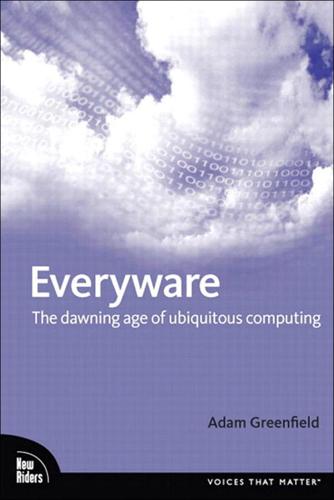
Everyware: The Dawning Age of Ubiquitous Computing
by
Adam Greenfield
Published 14 Sep 2006
But in the saga of Web standards, we have an object lesson in the power of bottom-up self-regulation to achieve ends in technological development that are both complex and broadly beneficial. So I see a real hope in the idea that a constituency of enlightened developers and empowered users will attend the rise of everyware, demanding responsible and compassionate design of ubiquitous technology. I further hope that the principles I've offered here are a meaningful contribution to the discussion, that they shed some light on what responsible and compassionate everyware might look like. I have one final thought on the question of principles and self-guided development.

A Time to Build: From Family and Community to Congress and the Campus, How Recommitting to Our Institutions Can Revive the American Dream
by
Yuval Levin
Published 21 Jan 2020
But even then, by imposing the test in the first place and draping an extra layer of responsibility and obligation over our naked humanity, our institutions help to protect the weak and restrain the strong. When we see our social lives as mediated by institutions that structure appropriate ways to do what we do, we are more likely to act responsibly and to demand responsibility of others. This sort of constraint and accountability often is not legally prescribed. It acts on us implicitly—and thus moves us to choose to behave responsibly. After all, in a free society, people cannot be coerced to act well. The constraints imposed by functional institutions therefore don’t only empower us, they also liberate us—they make liberal freedom possible.

Transport for Humans: Are We Nearly There Yet?
by
Pete Dyson
and
Rory Sutherland
Published 15 Jan 2021
Innovations affecting transport occur inside and outside the sector. Now Existing digital technologies, innovation from outside-in E-commerce/videoconferencing/digital connectivity/digital platforms Journey planners/shared mobility/car clubs/demand-responsive transport Near Existing physical technologies accelerated by transport Micromobility (e-scooters, e-bikes and more) Electric cars Far Emerging technologies pioneered by transport Driverless cars/autonomous vehicles/drones Hydrogen-powered freight, trains and shipping Hyperloop trains/electric planes The ‘hype curve’ shows how new technologies start more slowly than insiders expect.

Boeing Versus Airbus: The Inside Story of the Greatest International Competition in Business
by
John Newhouse
Published 16 Jan 2007
Oddly, the salaries of those who fly for the legacy carriers, besides being too high, are based on the size—actually, the weight—of the aircraft they fly. Hence, a pilot who normally flies a four-engine wide-bodied airplane nonstop between two cities set far apart is better paid than one who has the more demanding responsibility of taking off and landing a smaller airplane at sundry airports on a given day or evening. Of course, the pilots do have plenty of leverage. For the airline, a strike means watching its revenue stream dry up as heavily mortgaged aircraft sit idly on the ground. And pilots have other weapons.
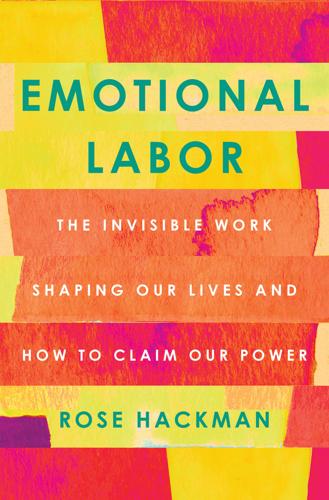
Emotional Labor: The Invisible Work Shaping Our Lives and How to Claim Our Power
by
Rose Hackman
Published 27 Mar 2023
I want them to give it to her willingly, and for her to give it in turn to those who have earned it. I want her to operate at her highest possible frequency, in symphony with those around her, receiving and giving the most radical kind of love—the kind of love bell hooks refers to as an action, not a feeling that just sits; the kind of love that demands responsibility and accountability—and is always accompanied by growth.13 Above everything else, I want her to think about happiness not just as an experience that she is on earth to facilitate in others, and I want her to think of her body not just as a canvas for the actions and feelings of others. And I want others, especially boys and men, to understand that she is everything except the simple vehicle of their own emotions and experiences when they relate to her.

Digital Bank: Strategies for Launching or Becoming a Digital Bank
by
Chris Skinner
Published 27 Aug 2013
You need product, marketing, sales and service, working together in a co-ordinated fashion to allow this to work. A good example is social media. You cannot roll out an app, launch a blog or establish a Facebook presence if you are not committed to interaction and dedication of agents to these areas, as these are now channels just as much as mobile, branch and call centre. Customers will demand responses when you launch these services and will expect interaction. This means that you cannot open these media channels without the right structure to respond. Most banks know that we will eventually be in a position where no physical contact would be required for financial services or servicing, but they also believe that the physical channel needs to remain in place.

The Entrepreneurial State: Debunking Public vs. Private Sector Myths
by
Mariana Mazzucato
Published 1 Jan 2011
The ICT revolution that created digitized communications not only created new commercial opportunities (such as through the medium of the Internet), but has provided an invaluable platform for the generation, collection, access and dissemination of knowledge of all forms. Given time and broad deployment, the smart grid could change the way we think about energy, create new commercial opportunities and improve the economics of renewable energy by establishing new tools for optimal energy supply management and demand response. To begin the green industrial revolution and to tackle climate change we are again in need of an active State that takes on the high uncertainty of its early stages, which the business sector fears. Yet, despite the buzz surrounding ‘clean technology’ as the ‘new economic frontier’, and the ‘green revolution’ as the imminent third ‘industrial revolution’, there is in reality little that is truly new about many clean technologies.

Climate Change
by
Joseph Romm
Published 3 Dec 2015
If we could predict with high accuracy wind availability and solar availability 24 to 36 hours in advance, then electricity operators have many strategies available to them. For instance, operators could plan to bring online a backup plant that otherwise needs several hours to warm up. Or they could use demand response, which is paying commercial, industrial, and even residential customers to reduce electricity demand for a short time given a certain amount of advance warning. In fact, such prediction capability is already being developed. As a 2014 article titled “Smart Wind and Solar Power” in the magazine Technology Review put it, “Big data and artificial intelligence are producing ultra-accurate forecasts that will make it feasible to integrate much more renewable energy into the grid.”
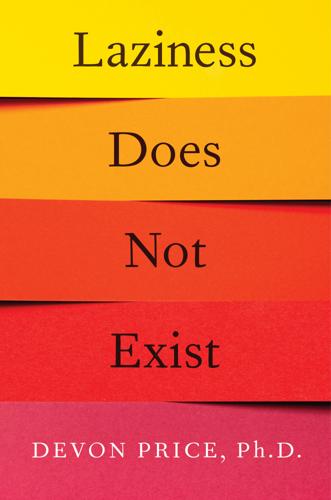
Laziness Does Not Exist
by
Devon Price
Published 5 Jan 2021
Coping with Parenting Guilt It’s no coincidence that the client who gave up on having a clean house was a mother to small kids. Parents face perhaps the greatest social pressure to meet others’ needs of anyone. There are so many ways to get parenting “wrong,” in society’s eyes; so many choices that can earn a parent judgment and disdain.10 This makes an already tiring, demanding responsibility even more anxiety-ridden and grueling. And, once again, the source of this problem is the Laziness Lie. Competing yet incompatible perspectives on how to do parenting “right” become popular every few years. Every generation of parents finds something new to feel bad about. From about 1920 until the middle of the twentieth century, psychologists such as John B.

Groundswell: Winning in a World Transformed by Social Technologies
by
Charlene Li
and
Josh Bernoff
Published 23 May 2011
He never responds here (and for that matter, doesn’t take comments on his very popular blog). Until you get as popular (and insightful) as Seth, you can’t get away with this. More typical are companies like Southwest Airlines (@SouthwestAir, one million followers) that tweet deals and news but also respond to others. Southwest has recognized that, like McDonald’s, its presence will demand responses to service questions, not just tweeting news. On the day we looked, Southwest was tweeting “Ready to celebrate ‘12 Days of LUV?’ We’re giving away a $1,000 SWA Gift Card each day! Read the rules http://cot.ag/h16orp#12DaysofLUV.” But it was also responding to people with questions about its planes, its flights, and its promotions.
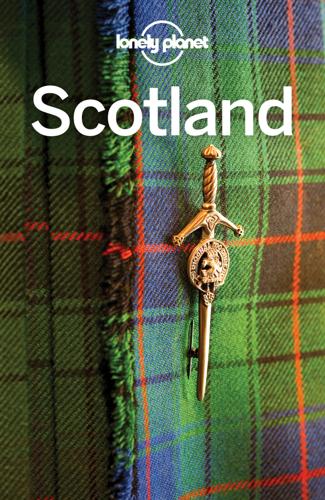
Lonely Planet Scotland
by
Lonely Planet
They sleep two or four and come in two categories, one with underfloor heating and en suite bathroom. Book them well ahead. It’s cheaper if you bring your own linen. There’s a two-night minimum stay for the en suite ones, one of which is adapted for wheelchair use. TROSSACHS TRANSPORT DRT (Demand Responsive Transport; %01786-404040; www.stirling.gov.uk) covers the Trossachs area. It sounds complex, but basically it means for the price of a bus you get a taxi to where you want to go. There are various zones. Taxis should preferably be booked 24 hours in advance by phone. Callander POP 3100 Callander, the principal Trossachs town, has been pulling in tourists for over 150 years, and has a laid-back ambience along its main thoroughfare that quickly lulls visitors into lazy pottering.
…
Rannoch Station Tea RoomCAFE£ (%01882-633247; www.rannochstationtearoom.co.uk; Rannoch Station; mains £4-6; h8.30am-4.30pm Mon-Thu & Sat, 10am-4.30pm Sun; p#) This superb little tearoom sits on the platform at remote Rannoch Station, serving coffee, sandwiches and cake to visiting hikers, mountain bikers and railway excursionists. Next door, in the former waiting room, is a fascinating exhibition on Rannoch Moor and the history of the railway. 8Getting There & Around A demand-responsive minibus service (www.pkc.gov.uk) – ie you have to phone and book it at least 24 hours in advance – runs between Kinloch Rannoch and Rannoch Station (£3, 35 minutes). Elizabeth Yule Coaches (%01796-472290; www.elizabethyulecoaches.co.uk) operates a bus service from Pitlochry to Kinloch Rannoch (£4.10, 50 minutes, three to five daily Monday to Saturday April to October) via Queen’s View and the Inn at Loch Tummel.
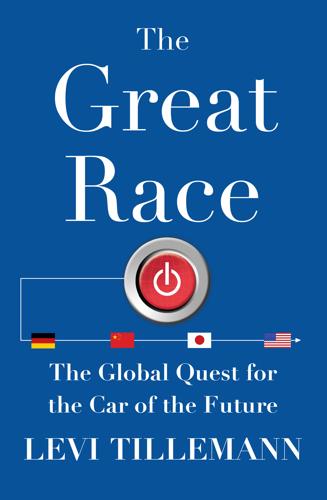
The Great Race: The Global Quest for the Car of the Future
by
Levi Tillemann
Published 20 Jan 2015
When the wind is blasting at full tilt, or the sun is blazing, EV batteries could soak up excess energy from the grid. And when there is a shortfall, an EV with an 18- or 24-kilowatt-hour battery (like the Volt or the LEAF) or a larger battery (like Tesla’s 80-kilowatt-hour unit) could feed a few kilowatt-hours back into the system. A less ambitious approach is for electrical utilities to use EVs as a “demand response” mechanism—allowing them to charge EVs when demand is low, and dial back EV charging when demand is high. This could help deal with the cyclical nature of daily electricity demand as well as spikes in renewable generation. For practical purposes, large amounts of EV battery storage connected to renewable energy resources could transform intermittent renewables into so-called baseload capacity—that is, generation that can dispatch electricity consistently, all the time, throughout the day.
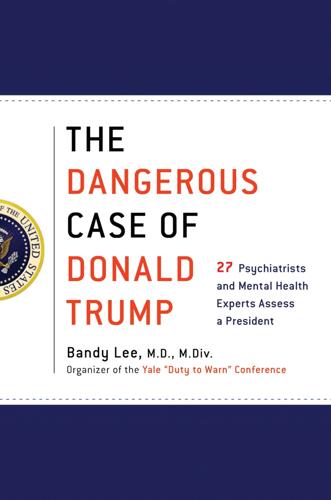
The Dangerous Case of Donald Trump: 27 Psychiatrists and Mental Health Experts Assess a President
by
Bandy X. Lee
Published 2 Oct 2017
While it is beyond the scope of this essay to delve into the social, economic, political, and demographic circumstances that allowed Trump to morph from entertainment persona to leader of the free world, it is important to note aspects of our current technological climate, which combine with Trump’s now-central role as U.S. president and his narcissistically compulsive personality, to keep the American public fixated on his toxic behavior and stuck in a state of chaotic, meaningless crisis. Our ever-increasing use of the Internet demands that we process new information at the speed of the supercomputers that drive it. As Brown University digital media scholar Wendy Chun (2016) observes, “[T]here is an unrelenting stream of updates that demand response, from ever-updating Twitter.com feeds to exploding inboxes. The lack of time to respond, brought about by the inhumanly clocked time of our computers that renders the new old, coupled with the demand for response, makes the Internet compelling.” “I think, therefore I am,” Descartes’s Enlightenment-era definition of human existence, has become, in the twenty-first century, “I post, therefore I am.”
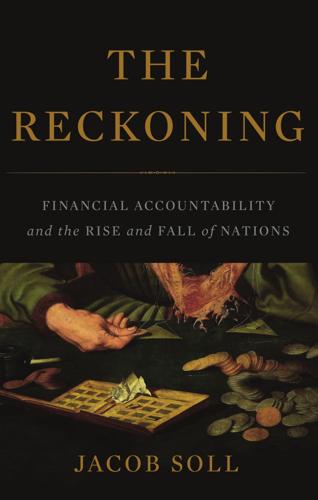
The Reckoning: Financial Accountability and the Rise and Fall of Nations
by
Jacob Soll
Published 28 Apr 2014
They taught applied mathematics and other subjects, such as the alphabet, prose instruction, and the catechism.25 The medieval Italian merchants did what the ancient Greeks, Persians, and Romans, the great Asian kingdoms, and the feudal lords could not: Without fanfare or public recognition, they invented double-entry bookkeeping, making the revolutionary leap into the calculation of profit. The only explanation for this is that Italian merchants needed double entry to calculate multipartner firms, equity and profits, and so, in a demand-response process, they developed it. Although we do not know for sure who first did it, Tuscan merchants began developing double-entry bookkeeping. The records are of some debate, but the earliest recognized use of double entry appears in the documents of the ledgers of either the Rinieri Fini brother firm (1296), which traded in fairs across Europe, or the Farolfi merchant house (1299–1300), which traded between Florence and Provence.

Autistic Community and the Neurodiversity Movement: Stories From the Frontline
by
Steven K. Kapp
Published 19 Nov 2019
When it was going well, rather than a cat herder, I felt like an orchestra conductor, bringing out the unique features and capabilities of each member. One needs a lot of handholding, another needs an assignment and the freedom to get on with it. Some need constant reminders, others will grind to a halt in response to “nagging.” I had to carefully balance demands, responsibility and support to bring out the best in each member. In 2007, Autscape nearly ended. An interpersonal conflict escalated into a full division of the committee into two factions. It was brutal, messy, personal, and public. Those who believe that autistic people are always honest and loyal, and that groupthink, backbiting, and interpersonal politics are NT failings we are immune to, are wrong.

A Concise History of Modern India (Cambridge Concise Histories)
by
Barbara D. Metcalf
and
Thomas R. Metcalf
Published 27 Sep 2006
Throughout Asia, the economies of the agrarian empires had been fuelled in the seventeenth century by the influx of specie gained from New World conquest, as Europeans sought valued commodities. Asian economies, including that of the Mughals, were increasingly monetized, and cash-crop production, demand-responsive, expanded. Evidence of the vast extent and 24 A Concise History of Modern India wealth of the empire remain in the dynasty’s monuments, above all those of Shah Jahan. Indian seaborne trade, to be sure, was largely in the hands of Arabs and, from the beginning of the sixteenth century, the Portuguese.

The Millionaire Fastlane: Crack the Code to Wealth and Live Rich for a Lifetime
by
Mj Demarco
Published 8 Nov 2010
I didn't rely on the pontificators at CNBC who rapaciously declared that housing was safe. I didn't rely on the mainstream media. I didn't rely on others. I relied on me. I was driving, not hitchhiking. And the beauty of driving is something that escapes most people: responsibility. Wealth Demands Responsibility, Followed by Accountability Responsibility is the forefather to accountability, but one doesn't evidence the other. When you admit responsibility to over drafting your checking account yet do it again next week, you're not accountable. When you admit responsibility to fathering a child out of wedlock, yet continue to engage in that behavior, you're not accountable.

Green Philosophy: How to Think Seriously About the Planet
by
Roger Scruton
Published 30 Apr 2014
Hence climate change has been not merely believed in but seized upon, as a convenient way of turning a political problem into a moral and spiritual challenge, a wake-up call to mankind as a whole, which can be addressed only by action so radical as to amount to a change of life. And when people propose some less demanding response to the problem, they may be greeted with surprise and indignation, since they are undermining the faith. For the salvationists, it is only a change of life that will meet the prevailing need, which is as much a spiritual as a material one. Global warming sounds in their thinking as a call of angelic trumpets from the sky.

Confronting Gun Violence in America
by
Thomas Gabor
Published 12 Sep 2016
It should be noted that 100 % accuracy is an unrealistic standard as the markings do not need to be readable in every case to be useful at least in some investigations. Nationally syndicated columnist E. J. Dionne of the Washington Post points out that governments at all levels account for about 40 % of gun industry revenues and the federal government alone accounts for 25 % of these revenues. He argues that taxpayers have a right to demand responsibility from an industry that obtains so much of our money. As one of the main customers of the industry, he recommends that the federal government buy weapons only from manufacturers that adopt basic safety measures and implement microstamping technology.111 Recommendation • The federal government should make funds available to enable more research into the development of personalized guns, as well as to assess and refine microstamping technologies. • The federal government, law enforcement agencies, and governments at all levels should only purchase guns from companies that adopt basic gun safety features and implement microstamping technology. • A target date should be set for introducing personalized guns into the market. • National standards should be established to childproof guns (e.g., with loaded chamber indicators and magazine safety locks) and to otherwise enhance public safety by ensuring that guns being manufactured are of high quality.

Autonomous Driving: How the Driverless Revolution Will Change the World
by
Andreas Herrmann
,
Walter Brenner
and
Rupert Stadler
Published 25 Mar 2018
A wireless charging infrastructure could be created, initially at certain charging stations (e.g. at parking lots) and later at stoplights, intersections and traffic signs. Furthermore, communications between vehicles and the infrastructure permit two-way charging through vehicle-to-grid interactions from either wired or wireless connections. Here, the car communicates with the power grid to sell demand response services by either returning electricity to the grid or by throttling the charging rate. Since 95 per cent of cars are parked at any given time, the batteries in electric vehicles could be used to let electricity flow from the car to the electric distribution network and back. Twoway charging is not only a potential source of revenue for car owners; it is also a way of storing energy.

A Classless Society: Britain in the 1990s
by
Alwyn W. Turner
Published 4 Sep 2013
Blair’s rhetoric about the welfare state – that it should provide ‘a hand up, not a hand out’ – was often attributed to the influence of Bill Clinton, but had been foreshadowed by Major too, in a 1991 speech to the Conservative Party’s women’s conference: ‘Our Conservatism is about developing personal independence. It is designed to give people a hand up, not a hand out.’ Similarly, Blair may have borrowed ‘with opportunity must come responsibility’ from Clinton (‘we offer opportunity; we demand responsibility’) for his 1994 conference speech, but it wasn’t a radical break from Major’s speech earlier the same year: ‘our policies are based on individual choice, individual opportunity, individual responsibility.’ It was a theme that both men stressed. Absolutely central to the concept of the Third Way, argued Blair, was the creation of ‘a modern relationship between the responsibilities of the citizen and those of society’, a refusal to be fooled by the false dichotomy between self-interest and the collective good.
…
And when it came to the roles played by the supermarkets and the oil companies, the necessary questions weren’t even raised. The underlying issue, however, was much the same: ‘just in time’ policies maximised profits, but were dangerously anti-social, leaving the country vulnerable to attack. But by now no one really expected this, or any other, government to demand responsibility or morality from major companies. Whether there was much demand at this point for political action to curb the power of multinational companies was doubtful. A loose coalition of anti-capitalist groups had staged a major protest in November 1999 outside a meeting of the World Trade Organisation in Seattle, but a May Day demonstration in London in 2000 attracted only some 5,000 people.

The Facebook Effect
by
David Kirkpatrick
Published 19 Nov 2010
He frequently met a brick wall. What was the chance his investment was ever going to amount to much if Thefacebook couldn’t be turned into a proper business? Zuckerberg seemed content that there merely be enough money to pay the bills and keep the site operating. Saverin had a difficult job at Thefacebook. Advertisers demand responsiveness. They want recipients of their money to be available if they have a question or problem—usually immediately. It was thus harder for Saverin to set his own hours as Zuckerberg and Moskovitz could. His job, unlike theirs, required interacting with customers. It wasn’t easy to do that and still keep up with his courses at Harvard.

Underland: A Deep Time Journey
by
Robert Macfarlane
Published 1 May 2019
Think yourself into the skin of another human, for then – sunk into a different being – you will surely find yourself unable to inflict suffering. It is as unsettling a text as I know: the vividness of the scene of execution it conjures, the curse it threatens as protection against its own erasure. The poem at once challenges and charges its reader, both forbidding and demanding response. Above all, it is a poem about compassion – about feeling as another feels. To the poem’s author, the darkness of the ‘bottomless pit’ represents the utter failure of empathy that characterized the war in those regions, as it must of necessity characterize war at all times and in all places

Elixir in Action
by
Saša Jurić
Published 30 Jan 2019
Distribution—To make a system that never stops, you have to run it on multiple machines. This promotes the overall stability of the system: if a machine is taken down, another one can take over. Furthermore, this gives you the means to scale horizontally — you can address load increase by adding more machines to the system, thus adding work units to support the higher demand. Responsiveness—It goes without saying that a system should always be reasonably fast and responsive. Request handling shouldn’t be drastically prolonged, even if the load increases or unexpected errors happen. In particular, occasional lengthy tasks shouldn’t block the rest of the system or have a significant effect on performance.

Investing Amid Low Expected Returns: Making the Most When Markets Offer the Least
by
Antti Ilmanen
Published 24 Feb 2022
Both sets of theories are grounded in economic intuition with ample theoretical foundation, and both sets have likely contributed to the existence of the observed value premium. Many investors may not care which set matters more, while some believe that risk-based explanations are less likely to be arbitraged away. Bringing the value-growth debate back to the practical level, value investors believe in the stabilizing forces of supply/demand responses, competition, and even regulation. A company with excess profits is likely to attract more competition as well as regulators' interest. Growth investors believe that cheap companies are cheap for a reason, reflecting lower profit growth or a declining industry. Empirically, it is true that stocks with higher valuation multiples tend to grow faster, both retrospectively and prospectively.

Why We Can't Afford the Rich
by
Andrew Sayer
Published 6 Nov 2014
As the surveys of public opinion on economic inequality show,20 this question concerns many people greatly: everyone, they feel, should contribute what they can, at least while they are young and fit enough to do so, and income should, where possible, be earned by doing something useful. It seems that what people contribute to the economy varies enormously: don’t some work, while others are unemployed? Don’t some do simple, unskilled work that anyone can do, while others do complex, demanding, responsible work? Surely some are not pulling their weight? In fact, aren’t they scrounging – free-riding on others’ labour? Yet, as we shall see, these unequal contributions have little to do with motivation and effort, or even intelligence and merit. All our own work? It’s often hard to assess what is ‘all our own work’.
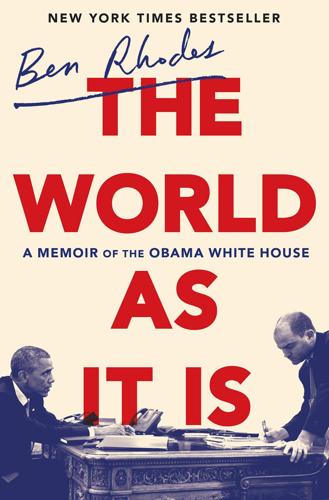
The World as It Is: A Memoir of the Obama White House
by
Ben Rhodes
Published 4 Jun 2018
These considerations include the Assad regime potentially losing command and control of its stock of chemical weapons or terrorist organizations—especially those tied to al Qaeda—gaining greater control of and maintaining territory.” He listed fourteen detailed questions about various scenarios that could take place in Syria and demanded responses to each of those questions. Boehner also focused on the need for congressional authorization: “It is essential you address on what basis any use of force would be legally justified and how the justification comports with the exclusive authority of congressional authorization under Article I of the Constitution.”

Small Wars, Big Data: The Information Revolution in Modern Conflict
by
Eli Berman
,
Joseph H. Felter
,
Jacob N. Shapiro
and
Vestal Mcintyre
Published 12 May 2018
Our own work suggests that voters in developing countries behave much more like rational, forward-thinking actors (such as the father considering sharing tips, depicted in chapter 3) than like irrational, emotionally driven individuals. See Asad Liaqat, Michael Callen, Ali Cheema, Adnan Khan, Farooq Naseer, and Jacob N. Shapiro, “Candidate Connections vs. Party Performance: Evidence on Vote Choice in a Low Information Environment” (working paper, 2017). 13. Shawn Cole, Andrew Healy, and Eric Werker, “Do Voters Demand Responsive Governments? Evidence from Indian Disaster Relief,” Journal of Development Economics 97, no. 2 (2012): 167–81. 14. Egor Lazarev, Anton Sobolev, Irina V. Soboleva, and Boris Sokolov, “Trial by Fire: A Natural Disaster’s Impact on Support for Authorities in Rural Russia,” World Politics 66, no. 4 (2014): 641–68. 15.
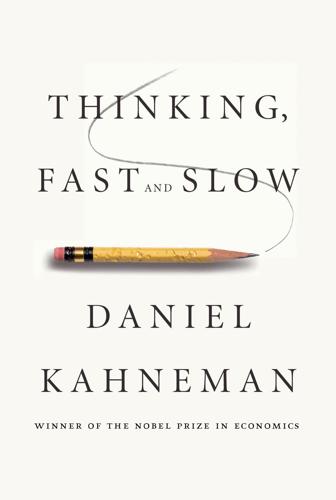
Thinking, Fast and Slow
by
Daniel Kahneman
Published 24 Oct 2011
riskless and risky decisions: A review of the price of risk, based on “international data from 16 different countries during over 100 years,” yielded an estimate of 2.3, “in striking agreement with estimates obtained in the very different methodology of laboratory experiments of individual decision-making”: Moshe Levy, “Loss Aversion and the Price of Risk,” Quantitative Finance 10 (2010): 1009–22. effect of price increases: Miles O. Bidwel, Bruce X. Wang, and J. Douglas Zona, “An Analysis of Asymmetric Demand Response to Price Changes: The Case of Local Telephone Calls,” Journal of Regulatory Economics 8 (1995): 285–98. Bruce G. S. Hardie, Eric J. Johnson, and Peter S. Fader, “Modeling Loss Aversion and Reference Dependence Effects on Brand Choice,” Marketing Science 12 (1993): 378–94. illustrate the power of these concepts: Colin Camerer, “Three Cheers—Psychological, Theoretical, Empirical—for Loss Aversion,” Journal of Marketing Research 42 (2005): 129–33.

Thank You for Being Late: An Optimist's Guide to Thriving in the Age of Accelerations
by
Thomas L. Friedman
Published 22 Nov 2016
So that stored cooling keeps the building comfortable most of the day. As a result, the amount of wind power that utility generates, rather than being insufficient, perfectly matches the demand—without having to worry about storing it on batteries or needing to call in coal-generated power. An incredibly complex demand-response challenge was solved at a cost of … zero—just by bringing intelligence to all the machines and optimizing the whole system. All the complexity was abstracted away by the software, and it is starting to happen everywhere today. Show Me the Money But if these transformations are real, why is it taking so long for them to show up in the productivity figures, as economists define them—the ratio of the output of goods and services to the labor hours devoted to the production of that output?

In the Age of the Smart Machine
by
Shoshana Zuboff
Published 14 Apr 1988
They keep giving us more responsibility, and they don't pay us more. So what we are doing is just chopping off some of the duties at the bottom of the job. This has meant that things are getting more sloppy around here. People are just not doing part of their jobs. A second adaptation was to challenge the notion that exposure to data demands responsiveness. Piney Wood's managers began to notice that in the most adversarial areas of the plant, operators had devel- oped a new method of expressing their discontent. Why resort to the machine-breaking tactics of an earlier century when it was so much more elegant to simply ignore data? We are exposing them to all this data now, which means more re- sponsibility because you can't ignore it.

The Zionist Ideas: Visions for the Jewish Homeland—Then, Now, Tomorrow
by
Gil Troy
Published 14 Apr 2018
When no tribe is a minority, no side can escape bearing responsibility for the destiny and the future of the State of Israel, and of Israeli society in general. So, no tribe is exempt from proposing solutions to deal with the challenge of defending the security of the state; from facing the economic challenges, or maintaining the international status of Israel as a member of the family of nations. Partnership demands responsibility. The third pillar is equity and equality. In order to ensure the partnership between us, we must ensure that no citizen is discriminated against, nor favored, simply because they belong to a specific sector. . . . In order to create a strong basis for the partnership between us, we will have to ensure an accessible “Israeli dream” that can be realized by each and every young person, judged only on the basis of their talents, and not according to their ethnic or social origins.
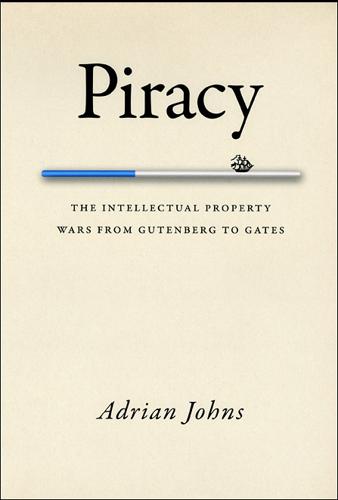
Piracy : The Intellectual Property Wars from Gutenberg to Gates
by
Adrian Johns
Published 5 Jan 2010
The first derives from the point that intellectual property exists only insofar as it is recognized, defended, and acted upon. That is, it is a practical matter. It takes shape not only through the stipulation of laws and treaties, but also through the actions societies take to put those laws and treaties into effect in homes, offices, factories, and colleges. Challenges demand responses, and the roles of intellectual property in everyday life reflect the history of their interaction. But in recent years the character of that interaction has changed. As piracy has grown and diversified, so a counterindustry has emerged, dedicated to combating it. The coherence and scope of this industry are relatively new and remarkable.

Expected Returns: An Investor's Guide to Harvesting Market Rewards
by
Antti Ilmanen
Published 4 Apr 2011
Besides irrational sentiment (animal spirits, the cycle of fear and greed) and extrapolation of recent performance, as well as feedback loops between the real economy and financial markets, here are several rational and purely financial mechanisms that boost procyclicality:• time-varying risk premia due to wealth-dependent risk aversion or risk (falling wealth, and rising volatilities and/or correlations, raise required returns with the result that today’s asset prices need to fall); • leverage/loss/margin spirals (losses prompt financial intermediaries to shrink their own balance sheets, while margin calls due to losses, higher “haircuts”, and investor redemptions force hedge funds and other levered customers to reduce positions, with the result that selling pressure pushes risky assets even lower); • liquidity spirals (waning trust and worsening funding conditions cause forced liquidations; a synchronous rush for the exit causes market liquidity to potentially dry up); • risk control spirals (VaR-based risk management, stop-loss rules, portfolio insurance strategies, and mark-to-market accounting combined with regulatory and rating pressures lead to risk reduction when market prices fall and measured volatilities and/or correlations rise). Recent research emphasizes the interactions between these various mechanisms as well as the central role of financial intermediaries and their funding constraints. Higher volatility pushes haircuts higher and thereby hurts funding liquidity. The wealth effect makes the demand responses of leveraged investors for risky assets upward sloping and their supply responses amidst meltdowns downward sloping. Higher leverage expands the economy’s risk-bearing capacity, procyclicality, and systemic risks. Position unwinds can suddenly transform stabilizing arbitrageurs (liquidity suppliers) into destabilizing liquidators (liquidity demanders).
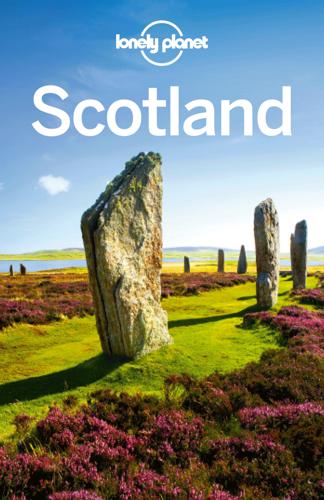
Scotland Travel Guide
by
Lonely Planet
In summer the Trossachs can be overburdened with coach tours, but many of these are day-trippers − peaceful, long evenings gazing at the reflections in the nearest loch are still possible. It’s worth timing your visit not to coincide with a weekend. TROSSACHS TRANSPORT In a bid to cut public transport costs, ‘Demand Responsive Transport’ (DRT) was being brought to the Trossachs when we researched this guide. Sounds complex, but basically it means you get a taxi to where you want to go, for the price of a bus (eg 10 miles for £3.30). Taxis run Monday to Saturday and need to be booked in advance; call or text 0844-567 5670 between 7am and 7pm Monday to Saturday, or book online at www.aberfoylecoaches.com.

The Sum of All Fears
by
Tom Clancy
Published 2 Jan 1989
There are rules for this sort of thing just as there are for opera. You have to follow the formula. Besides, it is a major - hell, a colossal development. Peace is breaking out again." "When are you leaving?" Cathy asked. "Soon," Jack replied. "Of course, there is a price we must pay for this, but history demands responsibility from those who forge it," Fowler said on the TV. "It is our task to guarantee the peace. We must send American men and women to protect the State of Israel. We are sworn to defend that small and courageous country against all enemies." "What enemies are they?" Cathy asked. "Syria isn't happy with the treaty as yet.